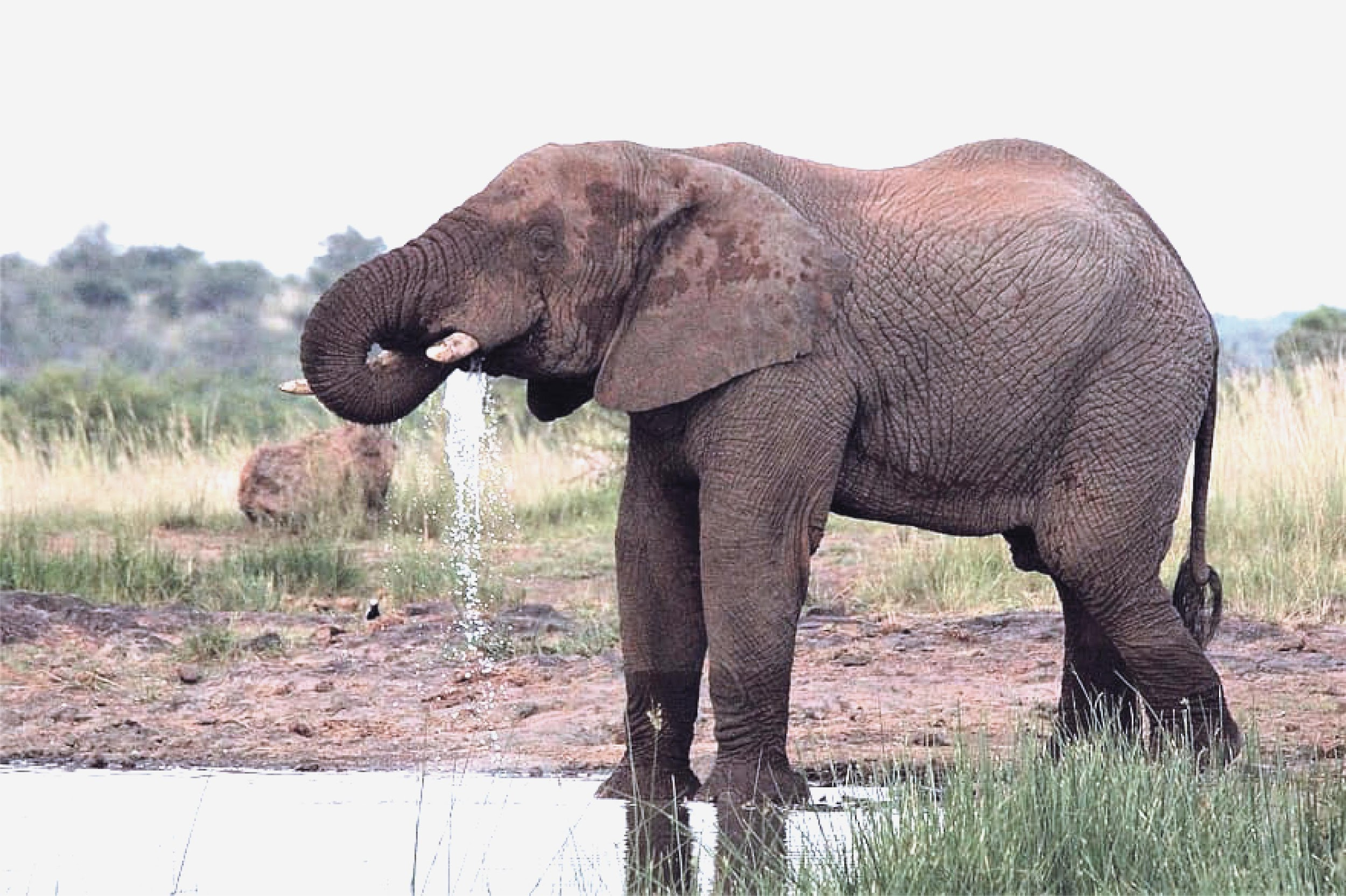
Elephant drinks water through
(a)Proboscis
(b)Mouth
(c)First sucks in the proboscis and then pours the same in the mouth
(d)The elephant does not drink water
Answer
495k+ views
Hint: Trunk is the fusion of the nose and upper lip. The elephant’s trunks may have over forty thousand individual muscles in it making it sensitive enough to select up one grass and yet strong enough to tear the branches of a tree.
Complete answer:
The trunk is additionally used for drinking. Elephants suck water up into the trunk or proboscis then blow it into their mouth. Elephants also inhale water to spray on their body during bathing or during summer for cooling. On top of their watery coating skin, the animal will spray dirt, which acts as a protective sunscreen.

Additional Information: -Elephant ears are about one-sixth the dimensions of its entire body and primarily function as a cooling mechanism by moving back and forth during summer.
-The tusks of elephants are its second upper incisors and grow continuously up to 18 cm within 7 years.
-The use of tusks is as follows as-
To dig for water, salt and roots
To debark trees
To eat the bark
To probe baobab trees to urge the pulp inside
To move trees and branches when clearing a path
-The elephant is assessed into three species:
The African Bush Elephant
The African Forest Elephant
The Asian Elephant or Indian elephant
So, the right answer is, ‘first sucks within the proboscis then pours an equivalent in the mouth.’
Note: -Familiar elephants will greet one another by entwining their trunk, very similar to a handshake.
-The trunk of an elephant has a highly developed sense of smell. Raising the trunk up within the air and swiveling it from side to side, sort of a periscope, it can determine the situation of friends and enemies and food sources.
Complete answer:
The trunk is additionally used for drinking. Elephants suck water up into the trunk or proboscis then blow it into their mouth. Elephants also inhale water to spray on their body during bathing or during summer for cooling. On top of their watery coating skin, the animal will spray dirt, which acts as a protective sunscreen.

Additional Information: -Elephant ears are about one-sixth the dimensions of its entire body and primarily function as a cooling mechanism by moving back and forth during summer.
-The tusks of elephants are its second upper incisors and grow continuously up to 18 cm within 7 years.
-The use of tusks is as follows as-
To dig for water, salt and roots
To debark trees
To eat the bark
To probe baobab trees to urge the pulp inside
To move trees and branches when clearing a path
-The elephant is assessed into three species:
The African Bush Elephant
The African Forest Elephant
The Asian Elephant or Indian elephant
So, the right answer is, ‘first sucks within the proboscis then pours an equivalent in the mouth.’
Note: -Familiar elephants will greet one another by entwining their trunk, very similar to a handshake.
-The trunk of an elephant has a highly developed sense of smell. Raising the trunk up within the air and swiveling it from side to side, sort of a periscope, it can determine the situation of friends and enemies and food sources.
Recently Updated Pages
Master Class 11 Economics: Engaging Questions & Answers for Success

Master Class 11 Business Studies: Engaging Questions & Answers for Success

Master Class 11 Accountancy: Engaging Questions & Answers for Success

Master Class 11 English: Engaging Questions & Answers for Success

Master Class 11 Computer Science: Engaging Questions & Answers for Success

Master Class 11 Maths: Engaging Questions & Answers for Success

Trending doubts
State and prove Bernoullis theorem class 11 physics CBSE

What are Quantum numbers Explain the quantum number class 11 chemistry CBSE

Write the differences between monocot plants and dicot class 11 biology CBSE

Why is steel more elastic than rubber class 11 physics CBSE

Explain why a There is no atmosphere on the moon b class 11 physics CBSE

State the laws of reflection of light




